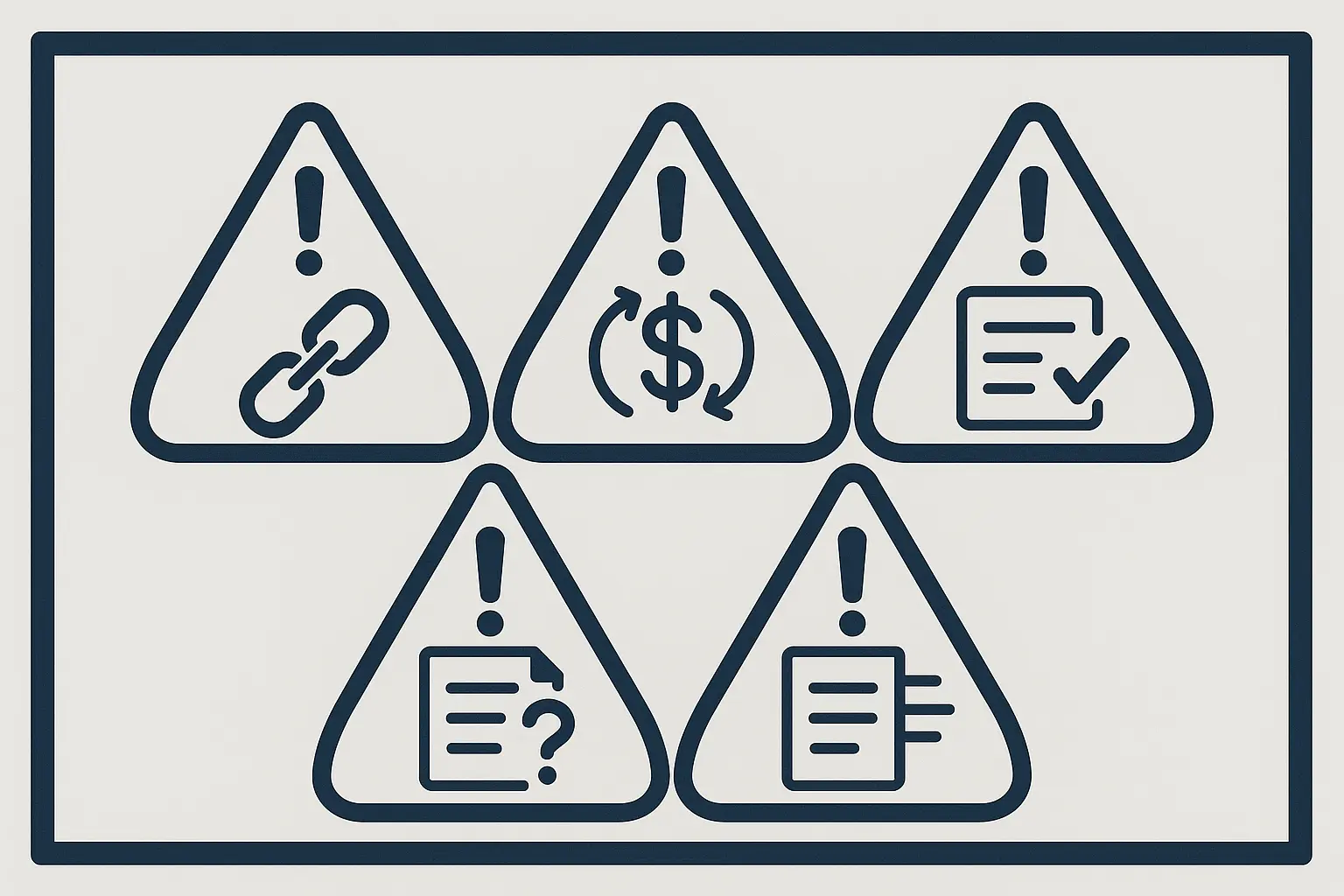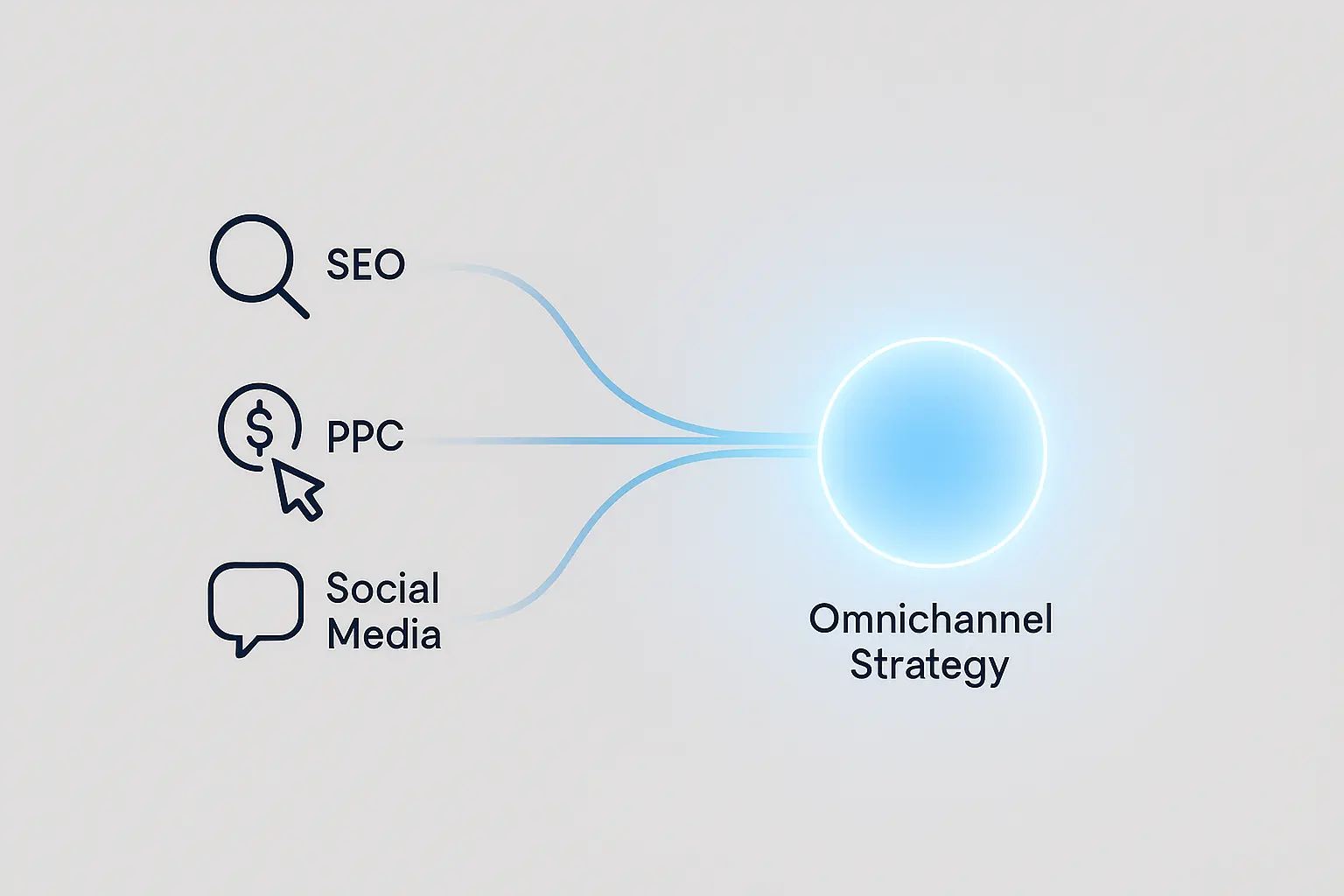You’ve been there. A promising new client comes to you with a simple request: “Can you run our Google Ads?” or “We need an SEO audit.” You dive in and optimize everything you can, but the results are… flat.
Sure, the ads are getting clicks, but conversions aren’t budging. The site is ranking higher, but that traffic isn’t turning into leads. Why? Because the problem wasn’t just in the ads or the SEO. The problem was that their ads promised one thing, their website delivered another, and their social media was talking about something else entirely.
This isn’t a failure of your tactics; it’s a failure of vision. In a world where 73% of shoppers use multiple channels during their purchase journey, a single-channel approach is like trying to solve a puzzle with half the pieces missing.
The solution? Stop selling isolated tactics and start selling integrated strategy. Your entry point is a high-value, paid discovery project: the Omnichannel Audit.
What is an Omnichannel Audit (And Why Your Clients Secretly Need One)
An Omnichannel Audit is a comprehensive analysis of a client’s digital presence across their core marketing channels—typically paid search (PPC), organic search (SEO), and social media.
Unlike a standard audit that examines one channel in isolation, an omnichannel audit focuses on the connections between them. It answers critical questions like:
- Is our brand message consistent from a Facebook ad to a landing page to an organic search result?
- Are we wasting money by having our PPC and SEO teams bid on the same keywords without a unified strategy?
- Are we using insights from social media conversations to inform our content and SEO?
This holistic view is essential because customers don’t see channels; they see one brand. A disjointed experience doesn’t just feel messy—it actively erodes trust and kills conversions.
The goal of this audit isn’t just to find problems. It’s to create a unified roadmap that turns disparate efforts into a powerful, integrated growth engine. This positions your agency not as a vendor who pulls levers, but as a strategic partner who understands the entire business landscape.
The Hidden Cost of Disconnected Channels
In many businesses, marketing departments operate in silos. The social media team has their goals, the PPC manager has theirs, and the SEO strategist is working on a separate agenda. This is incredibly common—research shows that only 20% of marketers say they have a consistent, cross-channel brand message.
This disconnect creates friction for customers and massive inefficiencies for the business:
- Wasted Ad Spend: Bidding on keywords in PPC that you already dominate organically.
- Conflicting Messages: A social media campaign promoting a “luxury” brand image while PPC ads focus on “deep discounts.”
- Missed Opportunities: Failing to use valuable voice-of-customer data from social media to create content that ranks in search.
By offering a service that directly addresses this widespread problem, you’re solving a fundamental business challenge that’s undermining their growth. The insights you uncover in an omnichannel SEO audit can become the foundation for a more effective and profitable marketing strategy.
How to Scope Your Audit: From Tactic to Strategy
The key to a successful omnichannel audit is a clearly defined scope. You’re not boiling the ocean; you’re creating a diagnostic snapshot that reveals the most critical opportunities for integration. Your scope should revolve around three core pillars.
The Three Pillars of Analysis
-
Search Presence (SEO & PPC):
- Keyword Overlap Analysis: Where are we competing against ourselves? Where are the gaps that neither channel is covering?
- Message & Offer Alignment: Does the ad copy align with the landing page headline and content? Is the user experience seamless from click to conversion?
- Funnel Coverage: Is PPC being used for bottom-of-funnel conversions while SEO builds top-of-funnel awareness, or are they fighting over the same ground?
-
Social Signals & Brand Alignment:
- Audience Insight Mining: What are customers saying on social? What pain points and questions should inform our SEO and content strategy? After all, nearly 50% of consumers follow brands on social media to learn about new products or services.
- Brand Voice Consistency: Does the tone on social media match the tone on the website and in ads?
- Competitor Social Strategy: How are competitors using social to support their search presence?
-
The Connective Tissue (Brand & UX):
- Cross-Channel Messaging: Is the core value proposition clear and consistent everywhere a customer might interact with the brand?
- User Journey Mapping: Trace the path of a typical user from a social post to a blog to a product page. Where does the experience break down?
- Tracking & Attribution: Can the client actually tell which channels are contributing to conversions? Are their analytics set up to measure a cross-channel journey?
Your final deliverable should be a strategic roadmap that outlines three to five key integration opportunities with clear, actionable recommendations for each.

Pricing Your Omnichannel Audit for Maximum Value
Because this is a strategic project, you should price it based on the value of the insights you provide, not just the hours you put in. Here are three common models.
Model 1: The Flat-Fee Discovery Project
This is the simplest model and often the easiest to sell. You charge a fixed price for the defined scope of the audit. It removes uncertainty for the client and positions the audit as a standalone product.
Best for: Agencies new to this offering or clients who are hesitant to commit to a larger engagement.
Typical Price Range: $2,500 – $7,500, depending on the complexity of the client’s business.
Model 2: Tiered Packages (Good, Better, Best)
Offer different levels of depth. This allows clients to choose a price point they’re comfortable with while showing them the added value of a more comprehensive analysis.
- Good: Core audit of SEO, PPC, and one social channel.
- Better: Includes deeper competitor analysis and user journey mapping.
- Best: Adds a full roadmap presentation to their leadership team and a 90-day implementation plan.
Model 3: Value-Based Pricing
This is the most advanced model, anchoring the price to a potential business outcome. Here, you use supporting data to build your case. For example, you can explain that companies with strong omnichannel engagement see 89% customer retention versus just 33% for those with weak engagement. Or that integrated campaigns across four or more channels can outperform single-channel campaigns by 300%.
If your audit can unlock even a fraction of that potential, its value could be tens of thousands of dollars. This makes a $10,000 – $15,000 price tag a strategic investment, not an expense.

From One-Time Project to Long-Term Partner
The most powerful aspect of the Omnichannel Audit is that it’s not the end of the engagement—it’s the beginning. The roadmap you deliver is the blueprint for your future work together.
The conversation naturally shifts from, “Should we hire you?” to “How soon can you start implementing this plan?” You’ve already proven your strategic value, identified the client’s biggest growth levers, and laid out the exact steps to take. This makes selling a six- or twelve-month retainer a logical next step, not a difficult pitch.
By starting with a paid discovery project, you de-risk the relationship for both you and the client. They get immense value upfront, and you get paid to develop the strategy that will fuel a profitable, long-term partnership. If executing that strategy requires more bandwidth than you have, a trusted agency SEO partner can provide the specialized support you need to deliver without adding headcount.
Frequently Asked Questions (FAQ)
How long should an omnichannel audit take?
A typical audit takes two to four weeks, from initial kickoff and data access to the final presentation of the roadmap. This provides enough time for deep analysis without losing momentum.
What if I’m only an expert in one area (e.g., PPC)?
This is the perfect opportunity to collaborate. You can handle your area of expertise and partner with a specialist for the other components. Many agencies use white-label SEO services to deliver the search portion of the audit and subsequent retainer, allowing them to offer a comprehensive solution under their own brand without hiring in-house.
What is the main deliverable for the client?
The primary deliverable is a strategic roadmap, often presented as a slide deck. It should start with an executive summary of the key findings, then detail three to five major growth opportunities with specific, prioritized recommendations for implementation.
How do I sell this to a client who only asked for an “SEO audit”?
Acknowledge their request, then elevate the conversation. You can say something like, “We can absolutely do a deep SEO audit. However, we’ve found that the biggest wins often come from looking at how SEO interacts with your other channels, like paid search and social. Would you be open to a slightly broader discovery project that gives us a complete picture of your customer journey?” This reframes their tactical request into a strategic opportunity.

Your Next Step: From Vendor to Visionary
Shifting from single-channel services to strategic omnichannel audits is more than a change in offerings—it’s a change in your agency’s identity. You move from being a task-oriented vendor to a visionary partner invested in your client’s overall growth.
This single project creates the perfect foundation. It gets you paid for your best strategic work, demonstrates your expertise, and builds the business case for a long and profitable partnership. The silos are costing your clients money and opportunity; it’s time to be the one who shows them a better way forward.

